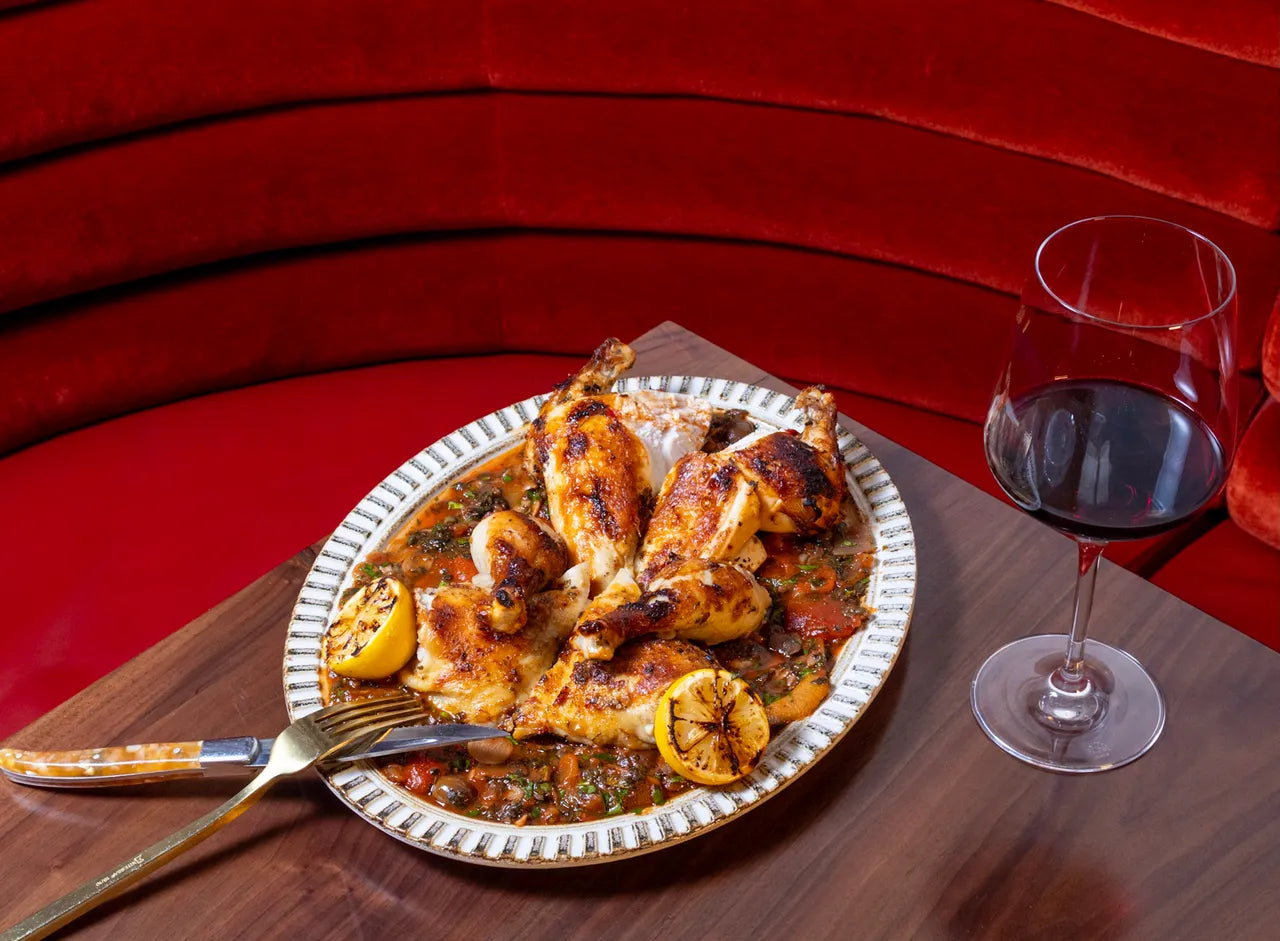
Why Can't My Roast Chicken Skin Stay Crispy for Service?
PoulTree Founder Tony Smith gets interviewed for a recent column in Food Service Director's website by Jonathan Deutsch, PhD. for his blog article republished here and linked below.
Dear Advice Guy, why can't my roast chicken skin stay crispy for service?
Jonathan Deutsch, PhD, tackles the age-old absolute bummer of soggy-skinned roast chicken in big-volume onsite settings.
Dear Advice Guy,
I am pretty happy with my roast chicken—basic brine, oil and herb rub, and roast—but by the time I get to service, I lose the crispy skin I get when I first pop it out of the oven. Whether I reheat or hot hold, it just isn’t the same. And I’m not set up to [cook] it a la minute. Help!
Roast chicken, like fresh pasta, an omelet, or sourdough bread is one of those deceptively simple dishes that truly assess a cook’s skill. These are recipes with few ingredients and simple techniques, but the results can range from euphoric to unpalatable. Capturing the magic of a home- or restaurant-roasted chicken can be challenging in a foodservice setting where quantity production and quick pick up are key. Poor hot holding will turn a juicy chicken to rubber. My advice is to first make sure your starting product, the roast chicken itself, is as strong as possible. Then follow some basic culinary science to be sure that whether retherming (reheating), hot holding, or both, you are setting yourself up for success.
Tony Smith, founder of PoulTree, a “no-tisserie” chicken roasting device, has given roast chicken more thought than anyone I know. A Modernist Cuisine alumnus and safety engineer, Smith developed the PoulTree system to generate predictably brown birds with uniformly crispy skin all the way around the bird. I use it at home to rave reviews but he also has a multiprong foodservice version. Smith recommends a roasting temperature of 425º F (220º C). “You can cook at any temperature, but higher heat yields crispier skin.” The key, whether using a PoulTree, wire rack, or other device is to allow for maximum air circulation to get a uniform crispy brownness so that “air is constantly moving around and through your bird. Resulting in faster cook times, crispy skin, and tender and juicy meat. What could be better?”
Once the bird is perfectly cooked and crispy, the next challenge is chilling and reheating or holding for service. Chef David Deshaies, Chef/Co-owner of L'Ardente and Unconventional Diner in Washington, DC says, “Crispy skin is the soul of rotisserie chicken…When you hear that crunch, you know it’s perfect.” For reheating, Deshaies recommends: “After cooking, place the chicken on a wire rack set over a tray. This allows air circulation, so the skin doesn’t steam against a flat surface. If you must refrigerate, let the chicken cool uncovered in the fridge for at least 30 minutes before covering. This reduces trapped steam. Store loosely covered or uncovered (if only for a few hours) so moisture doesn’t soften the skin. To recrisp before serving, pop the chicken in a hot oven for a few minutes.”
The right hot holding environment can take the place of reheating. To do that, in my opinion, you need a good combi oven—since keeping a roast chicken simultaneously juicy on the inside and crispy on the outside is very much a moisture management game. Daniel Lessem, Director of Education & Strategic Initiatives at RATIONAL USA says, “First of all, keeping the skin crispy over time means you need to maintain a dry holding environment. As such, best to build in a “runway of juiciness” so your chicken can withstand a dry hold for a period of time. How is this done? Combis use steam, allowing you to preserve more moisture (upwards of 22%) during the cooking process. RATIONAL’s Roasted Chicken sequence uses a combination of moist combi-heat in the beginning and dry heat to crisp and brown towards the end, while controlled by target temp (165F-172F, etc.) with an internal core probe. Once you’ve achieved greatness, you’ll also need a cabinet that can “Actively Dehumidify” and maintain the skin crispy at lower holding temps.”
Finally, I have had success with an outside-the-box technique. I save skins from other applications, lightly season, and bake them to a crisp between two sheet-pans and liners. This yields a crispy chicken skin “cracker” that can garnish any roast chicken dish to give the people what they want—crispy skin and juicy chicken, even if the previously cooked and held chicken is not quite at restaurant standard. More on chicken menu ideas here.
Jonathan Deutsch, PhD, CHE, CRC, is Professor and Vice Chair of Health Sciences, which encompasses Culinary, Food, Nutrition, Exercise and Health Sciences at Drexel University. He is the Founding Program Director of Drexel’s Food Innovation and Entrepreneurship Programs.
Chef David Deshaies, Chef/Co-owner of L'Ardente and Unconventional Diner in Washington, DC says, “Crispy skin is the soul of rotisserie chicken…When you hear that crunch, you know it’s perfect.” PHOTO COURTESY OF DAVID DESHAIES
This original article can be viewed here: https://www.foodservicedirector.com/foodservice-operations/dear-advice-guy-why-can-t-my-roast-chicken-skin-stay-crispy-for-service-


0 comments